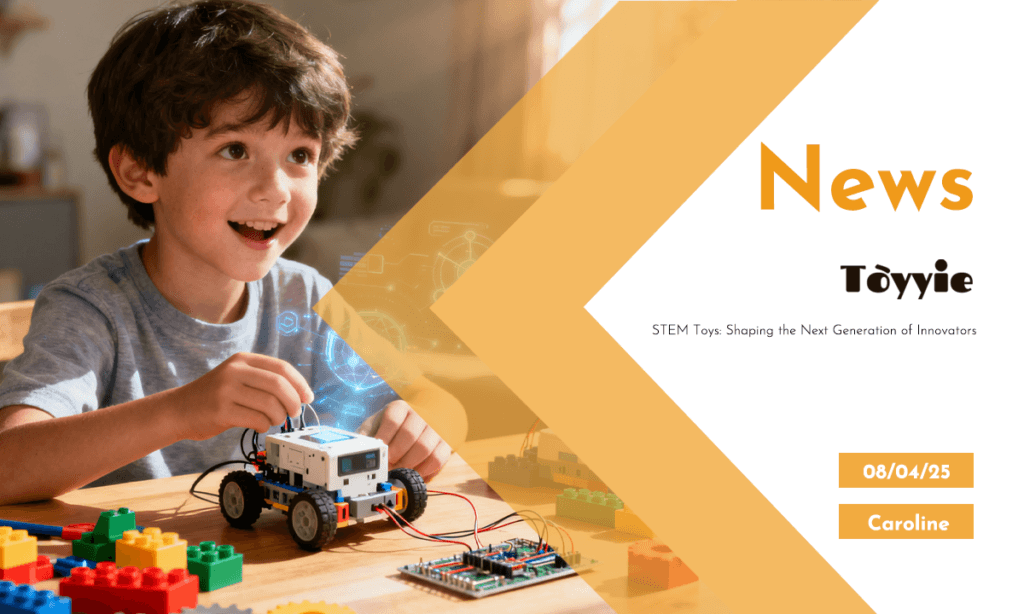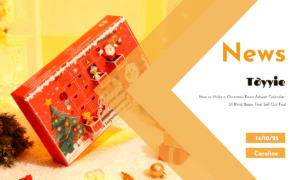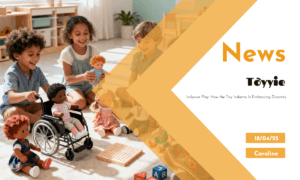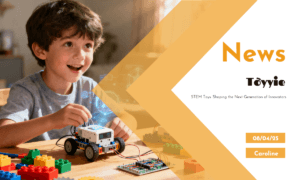📌 Introduction📌
When my friend’s daughter was six, she spent an entire afternoon trying to build a “robot” out of cardboard boxes, duct tape, and a broken remote control. It didn’t move, light up, or respond to commands (unless you count falling apart as a “response”). But when I asked her what it did, she grinned and said, “It’s a machine that cleans the ocean!” That moment—a child using scraps to solve a global problem—captures why STEM toys matter. They’re not just about gears and circuits; they’re about nurturing the audacity to believe a better world is possible.
STEM (Science, Technology, Engineering, and Mathematics) toys have evolved from simple building blocks to sophisticated tools that ignite curiosity and critical thinking. But in a market flooded with flashy gadgets, how do we separate the truly transformative toys from the noise? And why should parents and educators care? Let’s dive in.
Why STEM Toys Matter: Beyond the Hype 💡
Building Problem-Solvers, Not Just Consumers
I’ll never forget watching my nephew play with a coding kit called **Osmo**. Instead of passively watching a screen, he was arranging physical blocks to create animations. When his “program” didn’t work, he didn’t get frustrated—he debugged. That resilience is the heartbeat of STEM learning.
A 2022 study by *The Journal of Educational Psychology* found that children who engage with hands-on STEM toys show **23% higher problem-solving skills** than peers who don’t. These toys teach kids to ask, “How does this work?” and “What if I change this?”—skills they’ll use whether they become engineers or artists.
Closing the Gender Gap ✨
Walk into a toy store, and you’ll still see “science kits” marketed to boys and “craft sets” aimed at girls. But toys like **GoldieBlox** (engineering kits with female protagonists) and **LEGO Friends** (STEM-focused playsets) are challenging stereotypes. When girls tinker with circuits or build robots, they’re not just playing—they’re rewriting narratives about who belongs in tech.
Preparing for a Changing World
By 2030, **85 million jobs** may go unfilled due to a lack of skilled workers in tech and engineering (World Economic Forum). STEM toys aren’t just fun—they’re a down payment on a future where kids can thrive in careers we can’t yet imagine.
The Anatomy of a Great STEM Toy 🧩
Not all STEM toys are created equal. The best ones share these traits:
Open-Ended Exploration
Avoid toys with a single “right” answer. **Magna-Tiles** (magnetic building shapes) let kids create anything from castles to geometric art. The joy is in the process, not the product.
Real-World Connections
Toys like **Nancy B’s Science Club** kits (microscopes, weather stations) turn abstract concepts into tangible experiences. When a child observes a snowflake under a microscope, “states of matter” isn’t just a textbook term—it’s a wonder.
Collaboration Over Competition
The **littleBits** electronic kits thrive on teamwork. When kids combine their “Bit” inventions (a light-up wand, a buzzing alarm), they learn that innovation is a team sport.
STEM Toys That Are Changing the Game 🚀
Let’s spotlight a few toys that go beyond the basics:
Botley the Coding Robot (Ages 5+)
Botley doesn’t need a screen. Kids use a remote programmer to guide it through obstacle courses, teaching sequencing and logic. It’s like a digital treasure hunt.
Snap Circuits (Ages 8+)
This kit turns circuit-building into a creative act. Want to make a doorbell that plays “Happy Birthday”? Go for it. It demystifies electronics without dumbing them down.
KiwiCo’s Tinker Crate (Ages 9+)
Each month, kids receive materials to build projects like hydraulic claws or solar-powered robots. It’s like having a mad scientist uncle who mails you awesome experiments.
ThinkFun’s Gravity Maze (Ages 8+)
A marble run meets logic puzzle. To solve it, kids must engineer paths using spatial reasoning—a workout for the brain disguised as play.
The Future of STEM Toys: What’s Next? 🔮
The next decade will see STEM toys that are smarter, more inclusive, and deeply connected to real-world challenges.
AI-Powered Learning
Imagine a robot that adapts to a child’s skill level, offering hints or challenges in real time. **Miko 3**, a companion robot, already does this, engaging kids in conversations about math and science.
AR/VR Integration
With augmented reality, a **Merge Cube** can turn into a virtual volcano or a strand of DNA. Suddenly, “playing” becomes a portal to immersive learning.
Sustainability as a Feature
Toys like **Green Science’s Solar Robot** (made from recycled materials) teach eco-consciousness alongside engineering. Parents increasingly want toys that reflect their values.
Global Problem-Solving
The **UN’s Sustainable Development Goals** are inspiring toys that tackle climate change and inequality. **Earthopoly**, a sustainability-themed board game, challenges kids to “invest” in renewable energy and clean water.
A Call to Action: Let Them Play 🎈
STEM toys aren’t about creating mini-CEOs or Silicon Valley prodigies. They’re about giving kids the freedom to fail, iterate, and dream big.
So, let your child take apart that old toaster (safely!). Buy the messy science kit. Cheer when their “invention” doesn’t work—it means they’re learning.
Because the next Einstein might not be scribbling equations on a chalkboard. She might be in your living room, building a cardboard ocean-cleaning machine.
What STEM Toy Changed YOUR Life?
Did you play with LEGO, chemistry sets, or something weirder (remember **Creepy Crawlers**?!) Share your story in the comments. Let’s inspire each other to raise curious, resilient kids!









